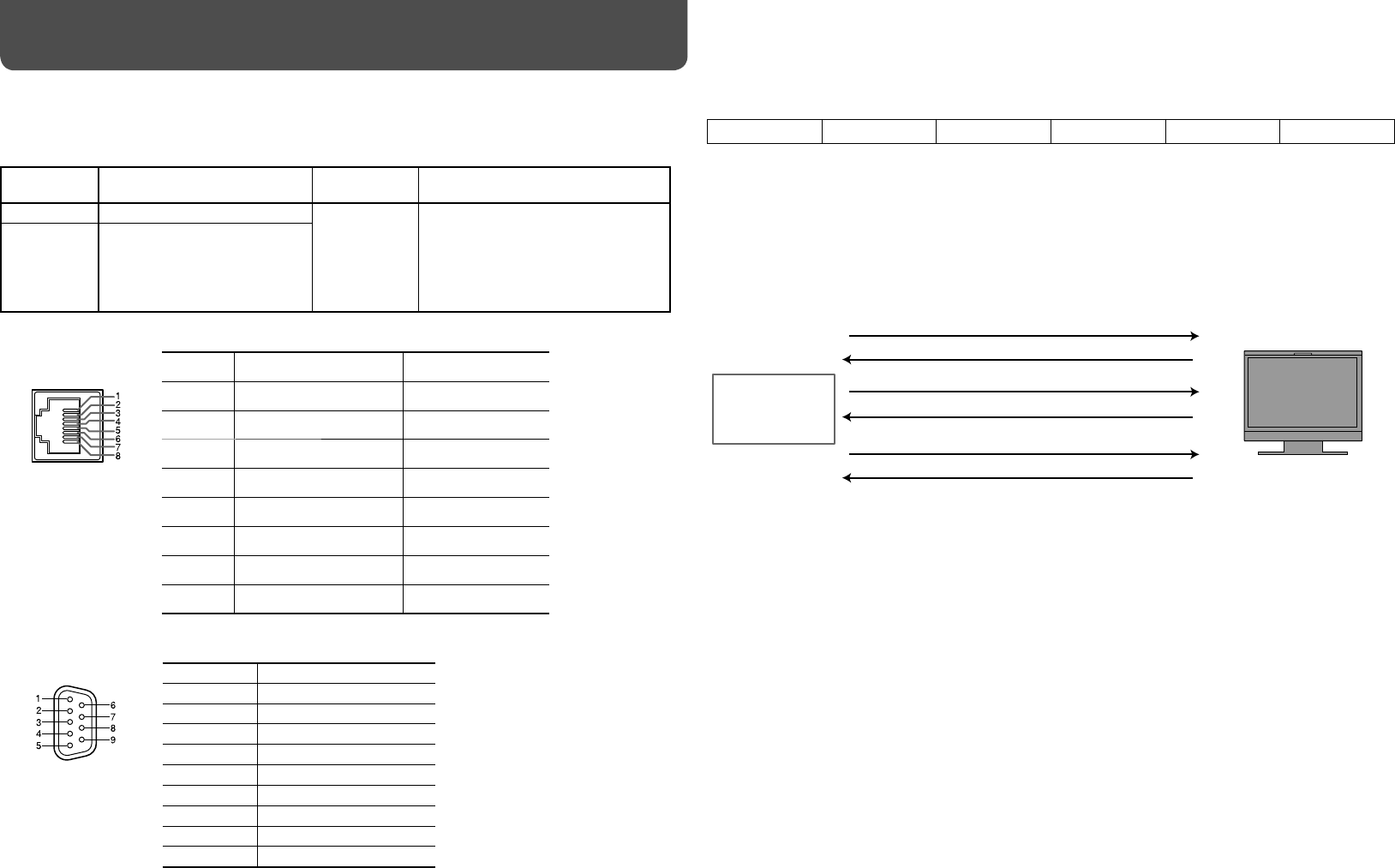
22
7 Using the serial communication
You can control the monitor from a personal computer etc. via the RS-485 or RS-232C terminal.
• Consult your dealer for the details of the external control specification.
<Communication specifications>
Input
terminal
Cable
Terminal
specification
Communication specifications
RS-485 A straight LAN cable
☞ See below
Baud Rate: 4800 bps
Data Bits: 8 bits
Parity: No parity
Stop Bits: 1 bit
Flow Control: No control
Communication Code: ASCII Code
RS-232C A straight cable with a D-sub
9-pin connector (male for the
monitor, female for the personal
computer etc.)
<Specifications of the RS-485 terminal>
<Specifications of the RS-232C terminal>
This is a female terminal.
1Starting the communication:
connection command (!00BCN1Cr)
3Selecting “SDI 1” input (!00BINACr)
5Terminating the communication:
termination command (!00BCN0Cr)
6Monitor’s status (@00BOKCr)
4Monitor’s status (@00BOKCr)
2Monitor’s status (@00BOKCr)
PC, etc.
Example of communication procedures
Monitor
External Control (cont.)
This is a female terminal.
• The 7th terminal and the 8th terminal are connected.
Pin No. Signal
1
NC
2
RXD
3
TXD
4
NC
5
GND
6
NC
7
RTS
8
CTS
9
NC
Pin No. IN terminal signal OUT terminal signal
1
TXD + TXD +
2
TXD – TXD –
3
RXD + RXD +
4
NC NC
5
NC NC
6
RXD – RXD –
7
NC NC
8
GND GND
<Command outline>
All commands consist of the following segments.
Header Monitor ID Command ID Function Data Cr (0DH)
On Header
“!”: Operation commands from the personal computer, etc. (☞ <Basic command list> on page 23)
“?”: Reference commands from the personal computer, etc.
“@”: Status returns from the monitor
• To start communication, send the connection command from the personal computer etc.
• To terminate the communication, send the termination command from the personal computer etc.
DT-V17G1_EN.indd 22DT-V17G1_EN.indd 22 09.12.3 7:55:21 PM09.12.3 7:55:21 PM


















